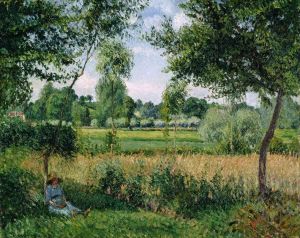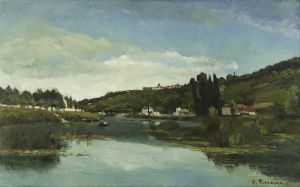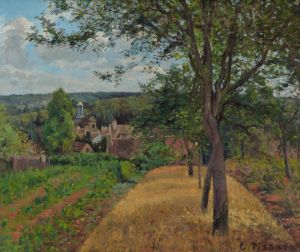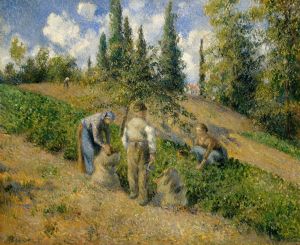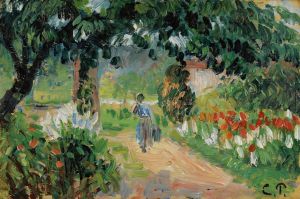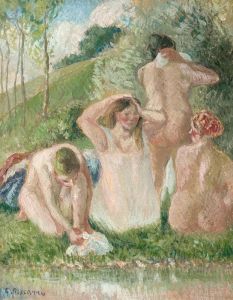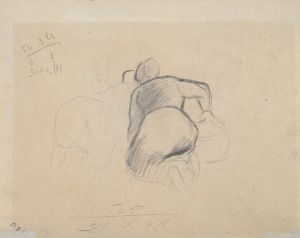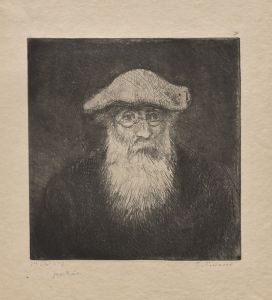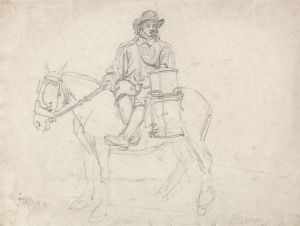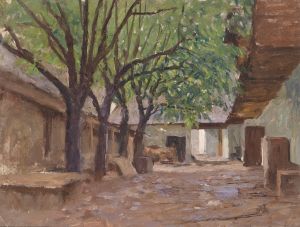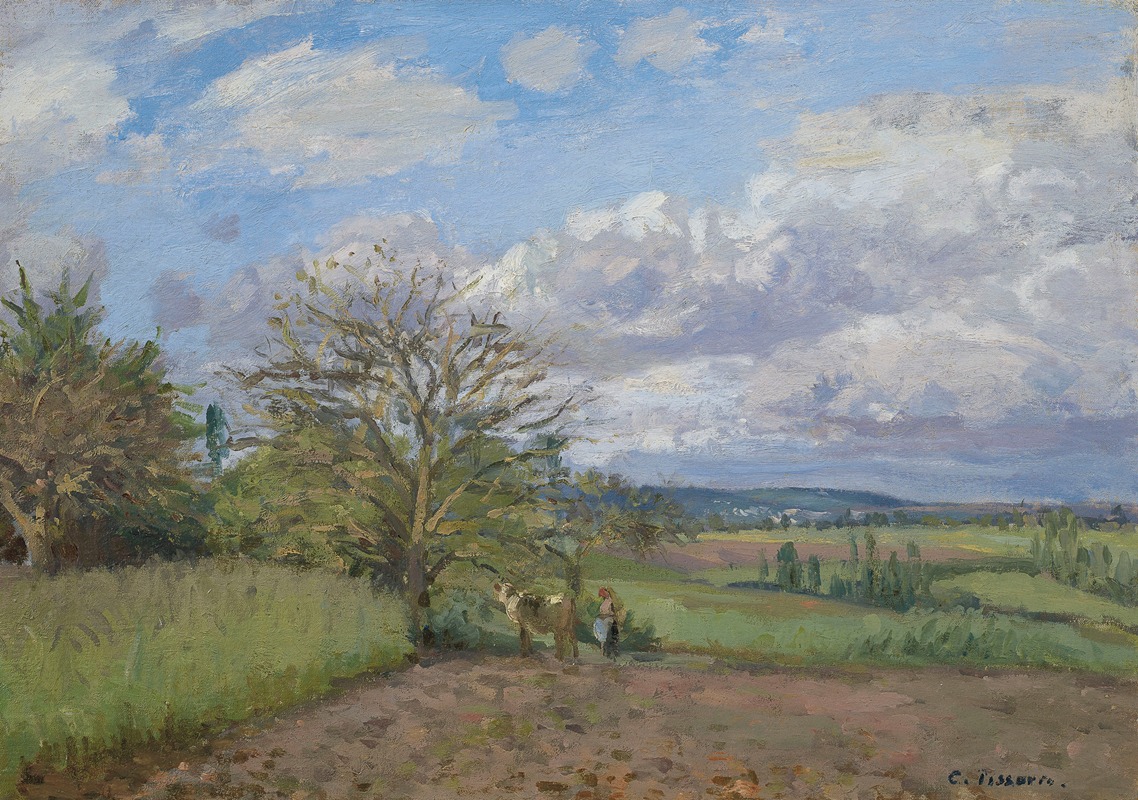
Paysage avec une vachère
A hand-painted replica of Camille Pissarro’s masterpiece Paysage avec une vachère, meticulously crafted by professional artists to capture the true essence of the original. Each piece is created with museum-quality canvas and rare mineral pigments, carefully painted by experienced artists with delicate brushstrokes and rich, layered colors to perfectly recreate the texture of the original artwork. Unlike machine-printed reproductions, this hand-painted version brings the painting to life, infused with the artist’s emotions and skill in every stroke. Whether for personal collection or home decoration, it instantly elevates the artistic atmosphere of any space.
Camille Pissarro's Paysage avec une vachère (translated as Landscape with a Cowherd) is a painting created by the renowned French Impressionist artist. Pissarro, born in 1830 in the Danish West Indies, was a pivotal figure in the Impressionist movement and is celebrated for his depictions of rural landscapes, urban scenes, and the lives of ordinary people. This particular work exemplifies his dedication to capturing the natural beauty of the countryside and the harmonious relationship between humans and their environment.
The painting depicts a tranquil rural scene, featuring a cowherd tending to cattle amidst a lush, verdant landscape. Pissarro's characteristic use of light and color is evident in the work, as he employs soft, natural tones to convey the atmosphere of the countryside. The brushstrokes are loose and textured, a hallmark of the Impressionist style, which sought to capture the fleeting effects of light and movement rather than precise details. The composition reflects Pissarro's interest in the everyday lives of rural workers, a recurring theme in his oeuvre.
Pissarro was deeply influenced by the rural landscapes of France, particularly in areas such as Pontoise and Éragny, where he lived and worked for extended periods. His connection to these regions is reflected in his ability to portray the simplicity and serenity of rural life with authenticity and empathy. Paysage avec une vachère aligns with his broader artistic philosophy, which emphasized the importance of depicting scenes from ordinary life rather than grand historical or mythological subjects.
The exact date of creation for Paysage avec une vachère is not definitively documented, but it is consistent with Pissarro's works from the late 19th century, a period during which he was actively exploring themes of rural labor and nature. This painting, like many of his works, demonstrates his commitment to plein air painting, a technique that involves working outdoors to directly observe and capture the natural environment.
As with many of Pissarro's paintings, Paysage avec une vachère reflects his egalitarian worldview and his admiration for the dignity of labor. His focus on rural subjects was not merely aesthetic but also ideological, as he sought to highlight the beauty and value of the working class in an era of rapid industrialization and urbanization.
The painting is part of Pissarro's extensive body of work, which has been widely exhibited and studied. His contributions to the Impressionist movement and his influence on subsequent generations of artists have solidified his place as one of the most important figures in the history of modern art.







